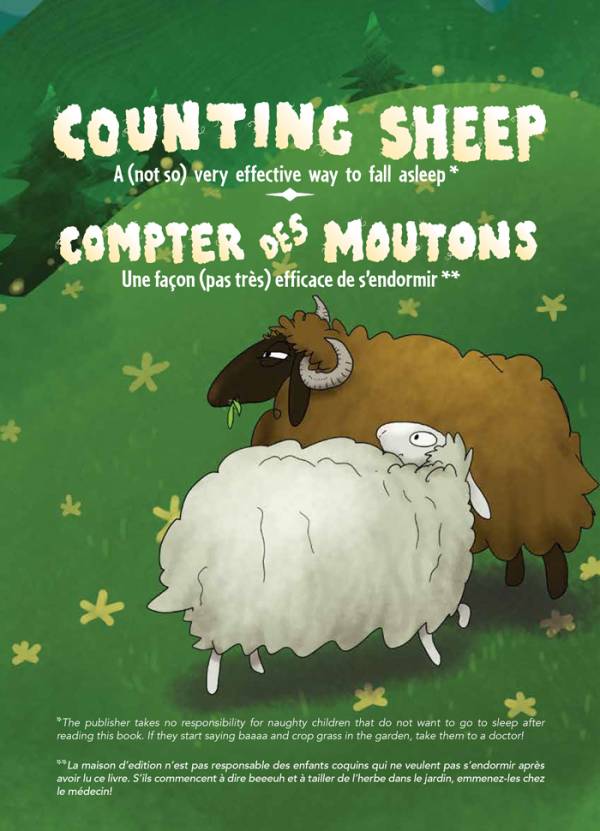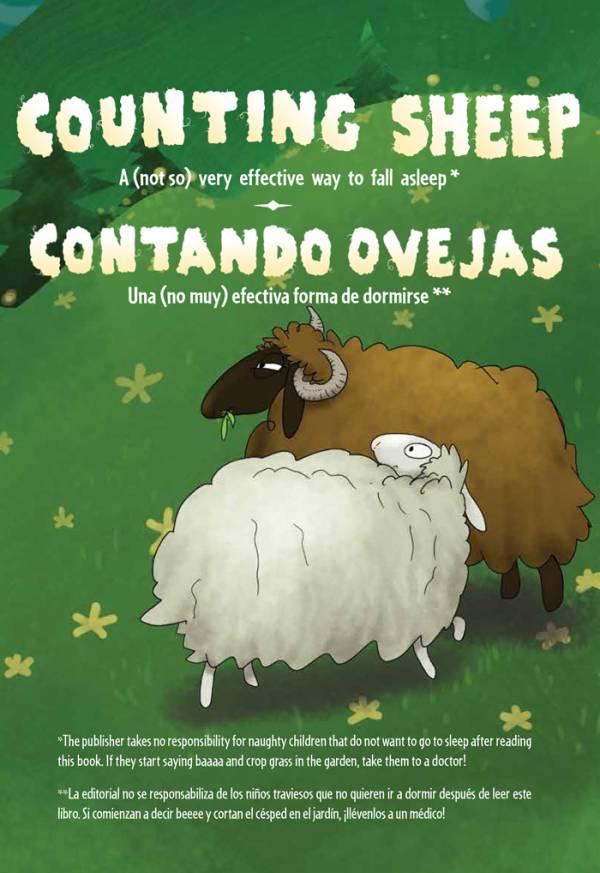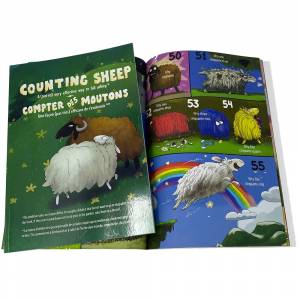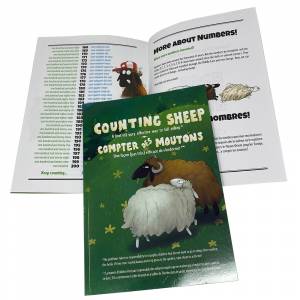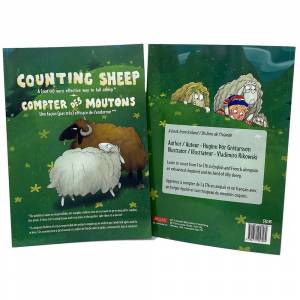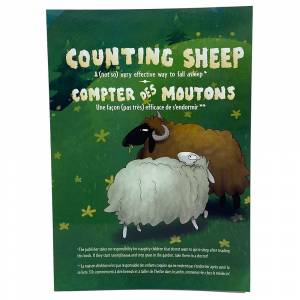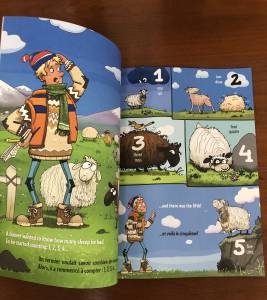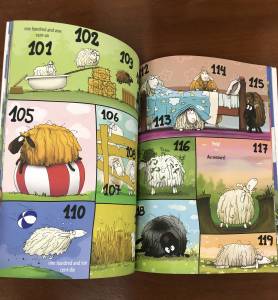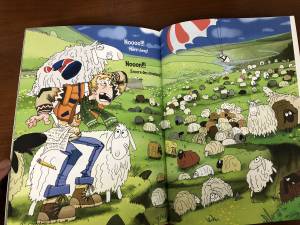
Learn to count from 1 to 176 in English and French alongside an exhausted shepherd and his herd of silly sheep. Readers of all ages will love this hilarious book from Iceland!
Apprenez à compter de 1 à 176 en anglais et en français avec un berger épuisé et son troupeau de moutons coquins. Les lecteurs et lectrices de tous les âges adoreront ce livre comique de l’Islande!
Author: Huginn Þór Grétarsson
Illustrator: Vladimiro Rikowski
Features
🐑 Hilarious, full-colour illustrations of over 200 unique sheep
🔢 Numbers from 1-200 in English and French
📚 Short, bilingual history of numbers
🔊 English and French audiobook via QR code
Contents
📗 1 softcover book
Details
Pages: 40
Ages: 4 -7
Language: English and French
Dimensions: 8.3”x11.7”
ISBN: 978-1772057584
Reviews
Written by: Dave Jenkinson, Canadian Review of Materials
Despite its title, this book is not about counting sheep as a sleep-inducing activity. The opening illustration introduces readers to “A farmer [who] wanted to know how many sheep he had. So he started counting: 1, 2. 3, 4...” and he continues counting his sheep. one by one, until he reaches 176 (somehow omitting 175!). The “stars” of the book are Vlagimiro Rikowski’s cartoon illustrations of the individual sheep, with each being different and projecting its own personality. For example, sheep 62 (sixty-two / soixante-deux), its back to a tree, looks ill (hung over?) while sheep 92 (ninety-two / quatre-vingt-douze) appears to have been the victim of a bad shearing. While most of the sheep appear singly in their own illustration “box”, occasionally, such as 32-35, Rikowski will combine several sheep in one illustration. In the 32-35 case, he has piled the four sheep on top of each other.
The text, from 1-101, essentially consists of the cardinal number which is then spelled out in English and then French. From 110-170, only the 10s are accompanied by the English/French text. Sometimes a sheep’s situation will lead to additional text being included. Consequently, when sheep 76 gets caught in a hole, it cries “Help! / Au secours!” The farmer continues to make cameo appearances throughout the book, often accompanied by brief text. The farmer’s locating sheep 85, 86 and 87 in an arctic-like setting leads to his exclaiming, “...sooo cooold.../...siiii frooiid...”
End matter includes five pages in which the numbers from 1-200 are listed and spelled out in English and French (which begs the question, “Why did the main text stop at 176?”). Another bilingual page offers a brief paragraph explaining when numbers were invented, and the final page provides a QR code that will allow readers to listen to the audio book version.
Younger “counters” may experience some challenges when several numbers are included in the same illustration and do not follow a left to right, top to bottom sequence, with one example being 154-164, “A rainbow of sheep! / un arc-en-ciel de moutons!”, where the numbers are presented in a clockwise manner.
In addition to being a most ambitious counting book, one that goes well past the usual 1-10 range, the book’s illustrations invite counters/readers to create stories about the 175+ sheep that they meet. How did sheep 17 get a pail on its head, and why is sheep 165 sporting a nuclear disarmament medallion?

